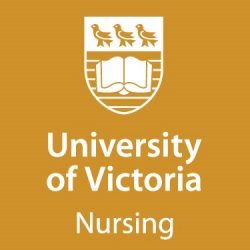Distance education by definition needs creative ideas for teaching and facilitating learning. I believe that good educators constantly and continuously learn from each opportunity and every mistake. I have been fortunate enough to be exposed to good teachers and mentors in various teaching environments and cultural perspectives (University of Athens in Greece, University of Alberta, University of Victoria) and have made many mistakes. However, through this process of developing my teaching dossier, I had the opportunity to reflect on my own teaching approach, set new goals and strategies, and link philosophy of teaching with student learning outcomes.
My teaching skills development includes a number of sources that contributed to my un-learning and re-learning process for improving communication and teaching strategies. From my initial academic appointment (2011) at UVic, I continuously keep changing teaching methods and approaches every time I teach a course to improve my teaching skills and student learning experiences. The implementation of those changes mostly had a positive impact on student outcomes and their evaluative comments (i.e., student testimonials). Specifically, I have attempted to transform my teaching philosophy from pedagogy (relevant to children) toward andragogy (related to adult learners) and adjust my teaching-and-learning theories and strategies accordingly. In particular, I made changes in the live sessions (i.e., Blackboard Collaborate), required textbook, and formative and summative student assessments.
Live sessions – In all courses that I taught, I used various approaches and mix of asynchronous and synchronous strategies and learning activities. In particular, the synchronous lectures and online discussions were the most popular ones. According to student comments and evaluation, I increased the number of the live sessions (i.e., Blackboard Collaborate) from a couple per term to one live session every other week. In the Spring 2017 term, I facilitated a live session every week in the form of lectures and synchronous discussion forums for questions and answers (see attached course syllabus).
To my understanding, students’ main challenge is their intimidation with quantitative research and statistics, how to read and understand the terms and language used, and how to pass the course. All their concerns are completely understandable. As an educator, I tried to be more student-centered in my teaching and learning strategies including textbook, live sessions, and assessment methods.
Required textbook – To date, in the NURS 480 (or NURS 425) course for undergraduate students, the required textbook has been constantly changed pursuing to identify the perfect book that is well-organized, easy to read, good for reference, and suitable for undergraduate post-diploma students. In the Summer 2016 term, I used the “Biostatistics – The bare essentials”, a book written by Norman & Streiner (2014)[1] that is well-written and used by many healthcare professional schools in Canada and the US. The authors use a humorous approach that is appreciated by the majority of (but not all) students. Learner comments refer to the difficulty to understand the terms and jargon used in the book as well as being distracted by the humorous stories/comments. In the future, I may not require a textbook for the NURS 480 course. Instead, a list of useful resources including contemporary peer-reviewed articles and videos as well as suggested relevant books will be used for weekly readings.
Assessment – Assessments are always stressful for students. Formative and summative student assessments have been changed all the time in the courses that I have taught so far (e.g., essay, critiquing peer-reviewed research articles, online synchronous exams). One of the traditional approaches that I have used to evaluate student understanding of the course content and application of knowledge is research articles reviews. Usually, there are two main assignments through the term and a final assignment. In each of these three assignments, students are required to read a provided research article (the same article for all students) and answer objective questions relevant to the article under review (e.g., purpose, variables included in the study, measurement tools, reliability and validity of the instruments). However, I want students to have more options to choose from for the final assignment. So, in the future I may apply another teaching initiative to assess student learning outcomes: each student will choose their own article focused on a certain quantitative/statistical method to address various research questions. All students will answer the same questions, but the answers will be different (based on the article under review). In addition, a dynamic assessment that supports andragogy will be implemented: student self-assessment, which focuses on the student progress. During the self-assessment process, I will interact with students identifying ways to overcome each person’s learning difficulties. This approach has been used with university students who have particular learning difficulties. Although labour intensive, assessment and intervention are inseparable and have the potential to instill self-confidence and personal responsibility to guide their own learning and to look for resources to overcome their learning difficulties and/or limited knowledge. The intention of the online self-assessment questions is to develop independent learners. Student comments will guide the adoption of this assessment method or experimentation of new techniques. In addition, I will work harder to demonstrate to the students the association of learning activities with learning outcomes.
[1]Norman, G.R., & Streiner, D.L. (2014). Biostatistics – The bare essentials (without SPSS) (4th ed.). Shelton, CT: People’s Medical Publishing House-USA (PMPH-USA), Ltd.

